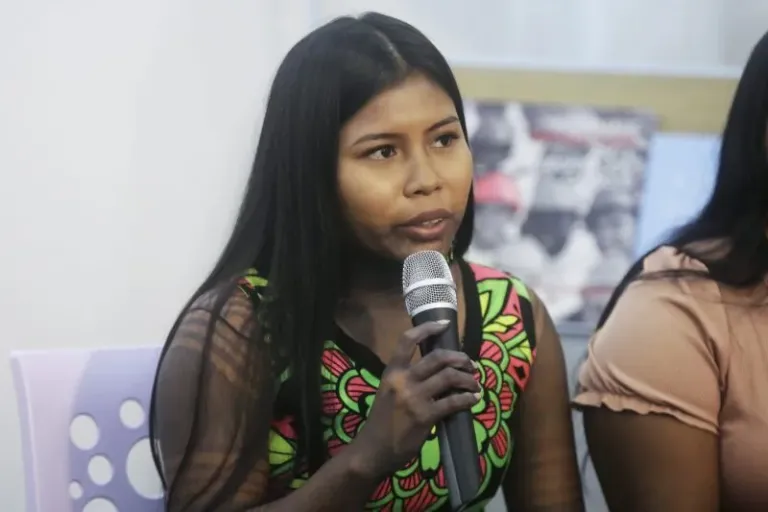In the remote indigenous territories of Panama, a transformative initiative is challenging deep-seated patriarchal norms. The “My Health, My Body, My Right” campaign, launched in October 2025, is a crucial effort to educate and empower Emberá-Wounaan women and adolescents about their fundamental health rights. Spearheaded by the humanitarian organization HIAS with the support of the Spanish Cooperation (Cooperación Española), this program tackles systemic barriers to healthcare, focusing on sexual and reproductive rights, menstrual hygiene, and mental health support within communities where women have historically been denied a voice.
Bridging the Gap: The Core Mission of the Health Initiative
The campaign operates on a dual front: raising awareness and delivering vital information. Its primary goal is to ensure that women and girls in deeply patriarchal structures understand they have the right to access healthcare services. Oliver Bush, Country Director of HIAS in Panama, explained to EFE that the initiative also strategically targets men, who commonly lead these community structures. “There is a stigma when talking about sexual and reproductive health,” Bush noted, highlighting the need for inclusive education to break down long-standing taboos.
The program focuses on several key areas:
- Family Planning: Informing women of their right to choose if and when to have children.
- Menstrual Hygiene: Providing essential information to manage health and dignity.
- Mental Health Support: Addressing psychological trauma and well-being.
- Access to Services: Teaching communities how to navigate the public health system.
A Collaborative and Culturally Respectful Approach
Success hinges on collaboration and cultural sensitivity. The campaign works in close coordination with local and national authorities to strengthen institutions and ensure its impact is sustainable. Itziar González, General Coordinator of the Spanish Cooperation in Panama, emphasized that the aim is to build “healthy communities” in a “culturally respectful” manner. She pointed out that unwanted and early pregnancies are a significant brake on the development of women and girls, preventing them from continuing their education and building a better life. By working together with community leaders, the campaign ensures its message is both heard and respected.
Giving Voice to the Voiceless: Women Share Their Stories
The campaign’s launch event at the Spanish cultural center in Panama City featured powerful testimonies from indigenous women who have directly benefited from the program. Their stories paint a vivid picture of the challenges and the newfound hope.
Chelin Chami: A Newfound Sense of Autonomy
Chelin Chami, a young woman from the indigenous village of Bajo Chiquito, described the traditional treatment of women in her culture as “very hard, very strong,” where women had no “voice or vote in anything.” She shared that women were often seen as existing solely for procreation. However, the workshops run by HIAS were a revelation. “We learned that we have rights,” Chami stated. This was a lesson she immediately shared with her mother, who had previously adhered to the predominant male discourse. Chami powerfully declared, “With our body, we can do what we want, without other people telling us what to do.”
Esmeralda Dumasá: Breaking the Silence on Abuse
Perhaps the most harrowing testimony came from Esmeralda Dumasá, the ‘nocó’ or traditional leader of Bajo Chiquito. She was unequivocal in her demand for an end to gender-based violence, including the most severe cases of sexual abuse within families—a painful reality that has long been shrouded in silence. “We are raped, we kept quiet out of shame,” Dumasá told EFE. “But now we have learned that we have support in HIAS and we want to say that we need that psychologist space.” She revealed that these violations often occurred at the hands of family members, leading to profound trauma and even suicide. Her statement, “There are many voices that were clamoring silently,” underscores the campaign’s role in providing a platform for healing and justice. For more on community developments in the region, see our coverage on panam.
Why This Campaign Matters: The Broader Context
The “My Health, My Body, My Right” campaign is not happening in a vacuum. It addresses critical issues that are particularly acute in remote and vulnerable populations. The communities targeted, located near the Darien Jungle close to the border with Colombia, face significant geographical and social isolation. This campaign is a vital link to the outside world and its evolving standards of human rights.
Consider these global and local contexts:
- Gender Equality: According to the United Nations Sustainable Development Goals, achieving gender equality and empowering all women and girls is a global priority. This campaign is a direct contribution to that goal in Panama.
- Indigenous Rights: The initiative aligns with the principles of the UN Declaration on the Rights of Indigenous Peoples, which affirms the right to improvement of economic and social conditions, including health.
- Public Health: Educated and healthy women are the cornerstone of thriving communities. They are more likely to raise healthy, educated children and contribute economically.
Looking Forward: Sustainability and Empowerment
The ultimate test for the “My Health, My Body, My Right” campaign is its longevity. The organizers are keenly aware that temporary change is not enough. By strengthening local institutions and fostering a new generation of empowered, informed women like Chelin Chami and Esmeralda Dumasá, the program aims to plant seeds of change that will grow for generations. The women themselves are now the agents of change within their own homes and villages, teaching their mothers and daughters that their bodies are their own and their voices deserve to be heard. This model of community-led empowerment is crucial for the long-term health and dignity of Panama’s indigenous women. For insights into other significant events shaping the country, explore our analysis of the Panama Canal’s record-breaking season.



